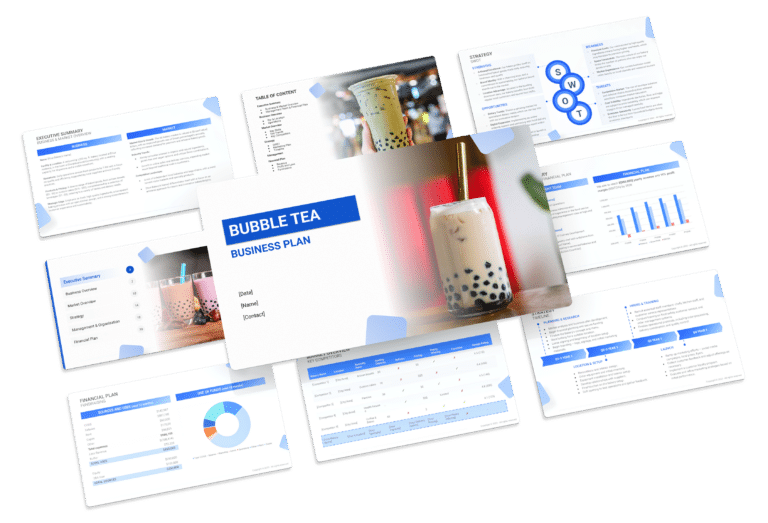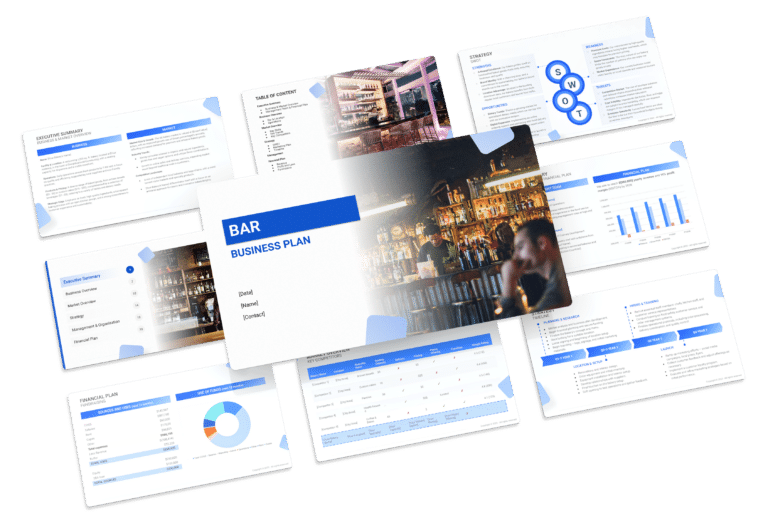How to Prepare a SWOT Analysis for a Brewery (Example)

Integral to a brewery business plan, a SWOT analysis assesses internal strengths and weaknesses, along with external opportunities and threats. Strengths, like unique craft beers and a vibrant taproom, contrast with weaknesses such as dependence on seasonal demand or challenges in distribution.
This strategic analysis unveils the brewery’s market position, spotlighting potential growth areas. For instance, opportunities may arise from the rising popularity of craft beverages, while threats could originate from increased competition or regulatory changes.
This article will explore diverse examples of strengths and weaknesses, providing brewery owners valuable insights for strategic business planning.

Strengths
Uncover the inherent strengths that set your brewery apart, crafting a legacy of exceptional brews and customer loyalty.
- Craftsmanship and Unique Brews: Exceptional craftsmanship and a repertoire of unique brews establish your brewery as a haven for beer enthusiasts.
- Example: Showcasing a commitment to quality ingredients, employing skilled brewers, and regularly introducing limited-edition brews define the brewery’s commitment to craft excellence.
- Brand Recognition and Storytelling: Building a strong brand identity and engaging storytelling captivate patrons, creating an emotional connection with the brewery.
- Example: Leveraging social media to share the brewery’s story, collaborating with local artists for label designs, and creating memorable experiences during brewery tours enhance brand recognition.
- Taproom Experience and Community Engagement: A vibrant taproom experience and active community engagement contribute to a loyal customer base.
- Example: Hosting brewery events, creating a welcoming taproom atmosphere, and actively participating in local festivals or farmers’ markets foster a sense of community and loyalty.
- Sustainable Practices and Environmental Consciousness: Embracing sustainable practices and environmental consciousness resonates with a growing eco-conscious consumer base.
- Example: Implementing water conservation measures, utilizing eco-friendly packaging, and sourcing locally to reduce the carbon footprint showcase the brewery’s commitment to sustainability.
Weaknesses
Identifying weaknesses is vital for continual improvement and delivering a consistently exceptional brewery experience.
- Limited Distribution Channels: Relying on a limited distribution network may restrict the brewery’s reach and accessibility to a broader market.
- Example: Exploring partnerships with additional distributors, establishing an online store, and participating in beer subscription services expand distribution channels.
- Quality Control Challenges: Maintaining consistent quality across batches may pose a challenge, impacting customer satisfaction.
- Example: Implementing rigorous quality control measures, investing in staff training programs, and utilizing advanced brewing technologies ensure consistency in flavor and quality.
- High Operating Costs: Elevated operating costs, especially in terms of ingredients and equipment, may impact overall profitability.
- Example: Negotiating bulk purchase agreements with suppliers, optimizing energy consumption, and exploring cooperative purchasing with other breweries mitigate operating costs.
- Dependency on Seasonal Trends: Relying heavily on seasonal trends may result in fluctuations in customer traffic and revenue.
- Example: Offering year-round brews while incorporating seasonal specials in moderation ensures a consistent customer base throughout the year.
Opportunities
Explore the opportunities that can elevate your brewery to new heights, tapping into emerging trends and expanding your market presence.
- Craft Beer Tourism and Brewery Tours: Leveraging the growing trend of craft beer tourism by offering brewery tours and experiences attracts beer enthusiasts and tourists.
- Example: Promoting brewery tours, creating exclusive tasting experiences, and collaborating with local tourism boards enhance the brewery’s appeal as a destination.
- Collaborations and Limited Edition Releases: Collaborating with other breweries or local businesses for limited-edition releases creates buzz and widens the brewery’s reach.
- Example: Partnering with local coffee roasters for a coffee-infused brew, collaborating with neighboring breweries for joint releases, and engaging in cross-promotional events attract diverse customer bases.
- Online Sales and Subscription Services: Capitalizing on the rise of online shopping by offering beer sales and subscription services enhances accessibility.
- Example: Launching an e-commerce platform, creating exclusive online-only releases, and introducing beer subscription boxes cater to a broader customer base.
- Diversification of Offerings: Diversifying product offerings, such as non-alcoholic brews or merchandise, expands revenue streams.
- Example: Introducing a line of non-alcoholic craft sodas, branded merchandise, and collaboration with local artisans for beer-related products diversifies the brewery’s offerings.
Threats
Anticipate potential threats and implement strategies to safeguard the brewery’s success in the face of challenges.
- Changing Consumer Preferences: Evolving consumer preferences and emerging beer trends may impact the popularity of certain styles.
- Example: Regularly conducting consumer surveys, staying abreast of industry trends, and introducing pilot batches based on customer feedback ensure the brewery remains aligned with changing preferences.
- Regulatory Challenges and Licensing Issues: Adapting to evolving regulations and addressing licensing challenges is essential to avoid disruptions in operations.
- Example: Maintaining regular communication with regulatory authorities, investing in legal counsel to stay informed about industry changes, and participating in industry advocacy groups address regulatory challenges proactively.
- Economic Downturn and Spending Constraints: Economic downturns and spending constraints may impact discretionary spending on craft beverages.
- Example: Offering value-driven promotions, participating in community events to maintain visibility, and creating loyalty programs during economic challenges encourage customer retention.
- Negative Online Reviews and Reputation Damage: Negative online reviews or reputation damage can significantly impact the credibility and patronage of the brewery.
- Example: Implementing a robust customer service strategy, actively addressing customer concerns, and promoting positive customer testimonials on social media counteract the impact of negativity.





